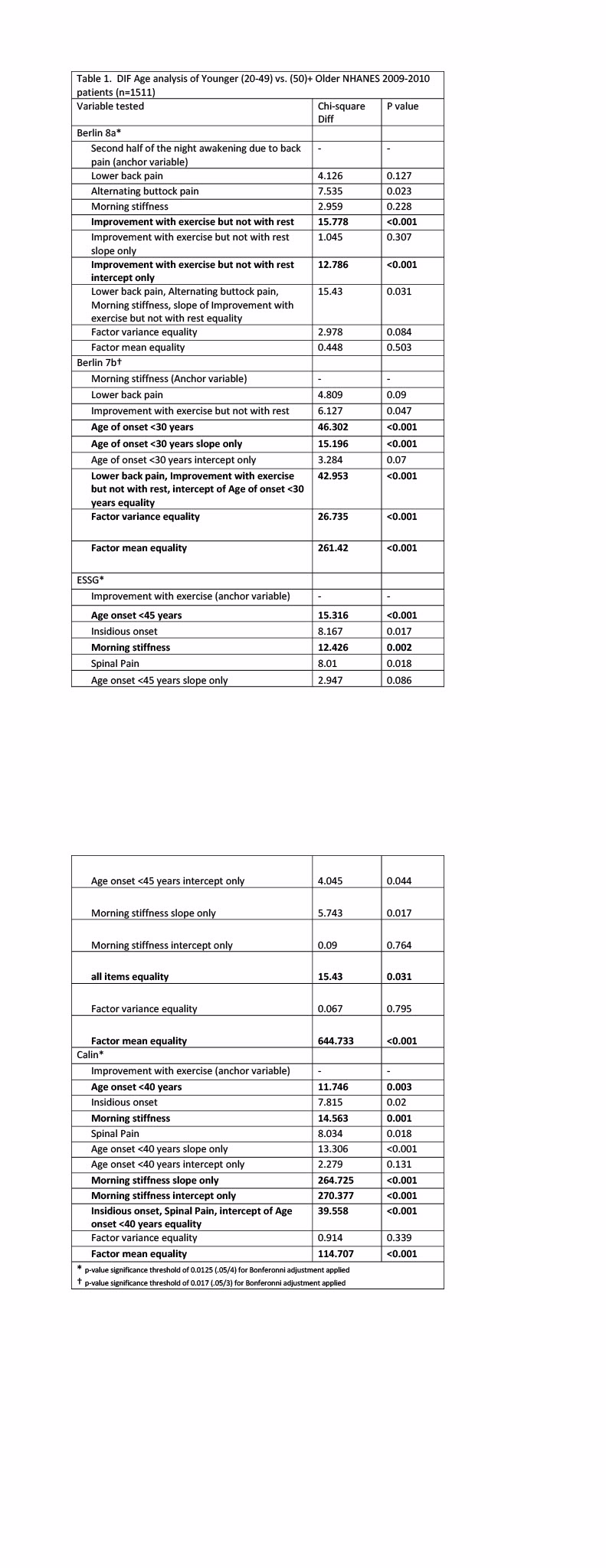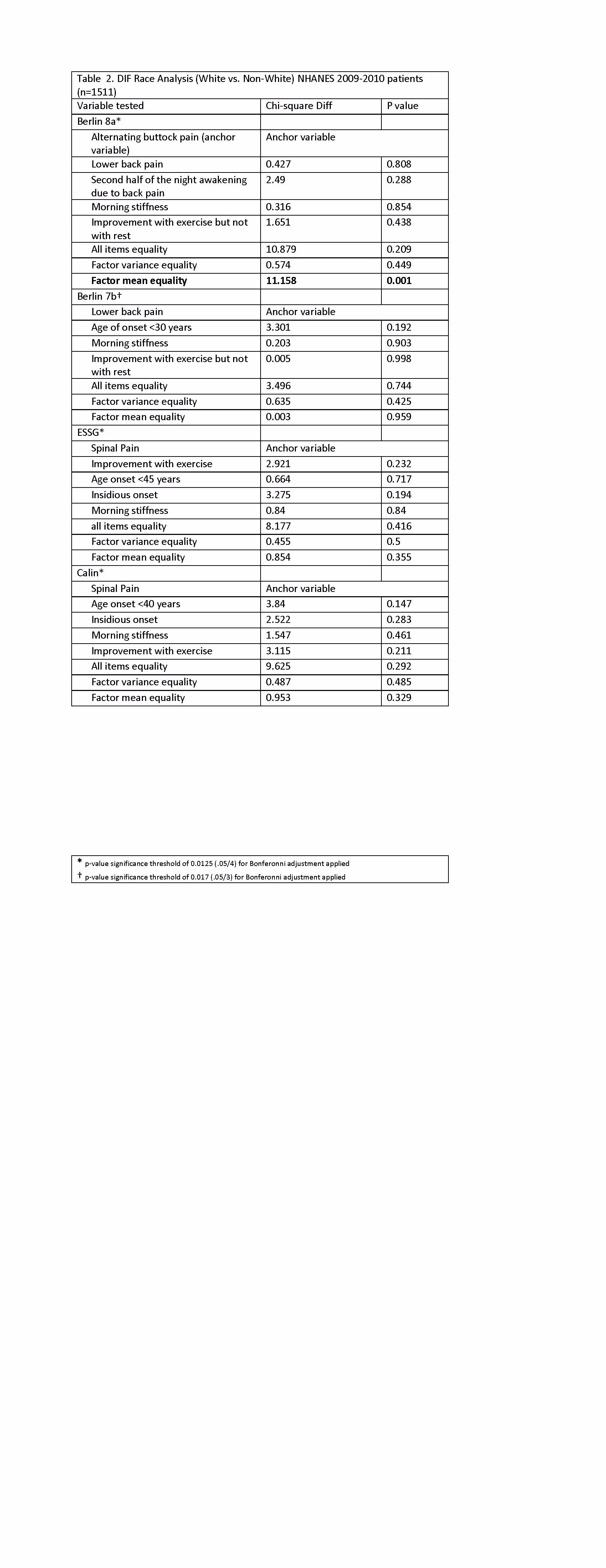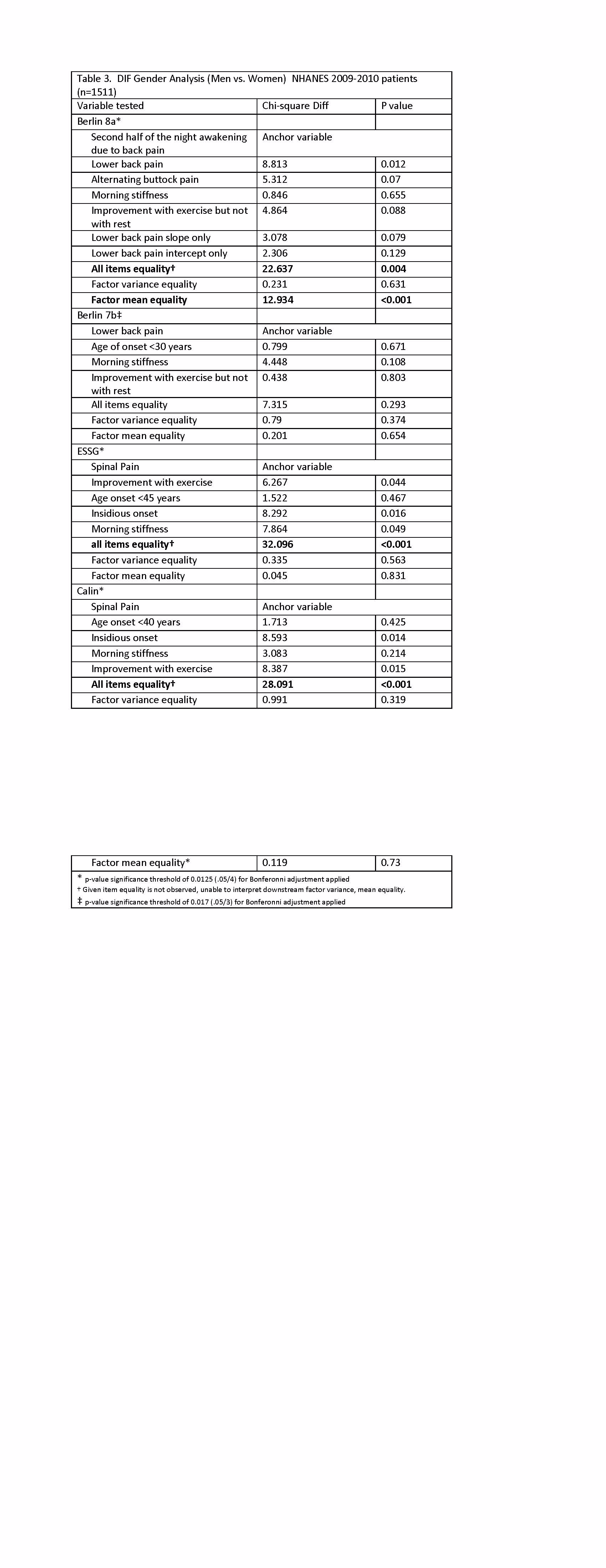Session Information
Session Type: Poster Session C
Session Time: 10:30AM-12:30PM
Background/Purpose: IInflammatory back pain (IBP) has clinical features that distinguish it from other back pain etiologies. While there are established IBP criteria, in different subpopulations criteria performance may differ. This study investigates IBP criteria items in different age, gender and race groups from a nationally representative cohort.
Methods: Methods: We studied the National Health and Nutrition Examination Survey (NHANES) 2009-2010 dataset, a US nationally representative data collection with demographic weighting. In the dataset, the Arthritis Questionnaire (ARQ) included all questions from Calin, European Spondyloarthropathy Study Group (ESSG), and Berlin IBP criteria (8a and 7b question sets)(1). We applied Differential Item Functioning (DIF) Analysis based on Item response theory (IRT) for age (20-49 years vs. >50 years of age), gender (men vs. women) and race (white vs. non-white) groups on each IBP criterion. With an anchor item selected from constrained baseline approach, chi-squared-based model comparison was performed to identify DIF for each item between the groups. Bonferroni correction was used adjust for multiple comparisons.
Results: There were 1511 patients with complete ARQ IBP questionnaires. DIF analysis for age groups revealed DIF in at least 1 item for all IBP Criteria, suggesting systemic difference between younger and older patients’ responses. Berlin 8a showed one uniform DIF item, indicating that older individuals found it harder to answer ‘yes’ to the ‘improvement with exercise/no improvement with rest’ item but still had similar IBP discriminative ability. Additionally, Berlin 7b’s ‘adult onset < 30 years old’ item displayed non-uniform DIF, indicating systematic bias across age groups. Non-uniform DIF/systematic bias for the items ‘adult onset < 40/< 45’ and ‘morning stiffness’ were observed in Calin and ESSG criteria. respectively. Other items showed no DIF for age groups. For Berlin 8a, a model with simultaneous constraints for all the identified DIF and non-DIFs (partial invariance model) was as good as the reference model with only anchor variable constrained. Further, the variance and mean of the latent IBP variable were equal between the age groups (Table 1)
In our race and gender analyses, DIF was only found in the Berlin 8a lower back pain item for gender groups (Tables 2 &3). None of the other IBP criteria had DIF observed. For race groups, the partial invariance model was as good as the reference model for most of the criteria (Table 2). In contrast, for gender groups, the partial invariance model was not as good as the reference model for most of the criteria (Table 3).
Conclusion: These findings highlight the importance of considering demographic factors in the interpretation of IBP criteria, particularly in older patients and among different genders where systemic bias were observed. Further research is warranted to explore the implications of these findings for accurate IBP detection, especially in diverse populations.
1. Weisman MH, Witter JP, Reveille JD. The prevalence of inflammatory back pain: population-based estimates from the US National Health and Nutrition Examination Survey, 2009-10. Ann Rheum Dis. 2013;72(3):369-73.
To cite this abstract in AMA style:
Hwang M, Kim S, Assassi S, Ogdie A, Weisman M, Reveille J, Green C. Differential Item Functioning of Inflammatory Back Pain Criteria in US Subpopulations [abstract]. Arthritis Rheumatol. 2024; 76 (suppl 9). https://acrabstracts.org/abstract/differential-item-functioning-of-inflammatory-back-pain-criteria-in-us-subpopulations/. Accessed .« Back to ACR Convergence 2024
ACR Meeting Abstracts - https://acrabstracts.org/abstract/differential-item-functioning-of-inflammatory-back-pain-criteria-in-us-subpopulations/



